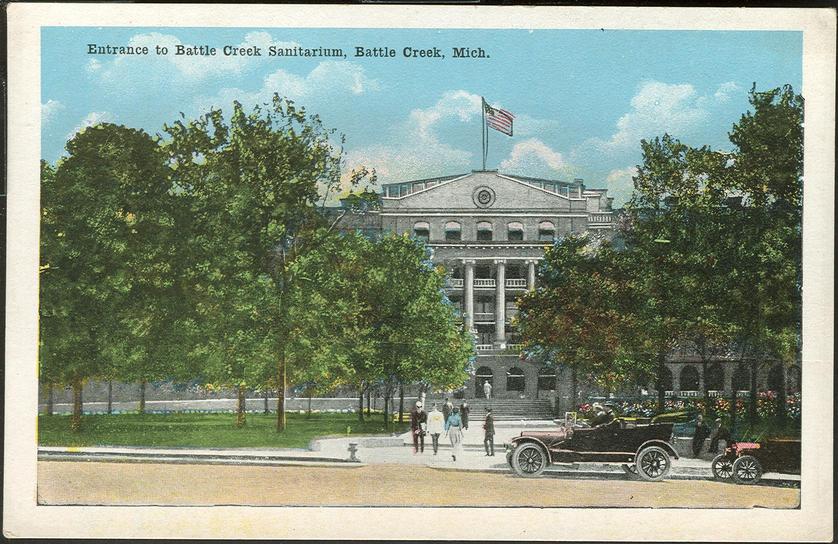

Kellogg stated that "at the Battle Creek Sanitarium, the number of persons employed is never less than eight hundred, and often rises in the busiest season to more than one thousand". Guests, staff, and buildingsĪlong with high numbers of patrons, there was a large number of staff at Battle Creek.

Medical records have since been microfiched and are now kept by the nearby Fieldstone Center, in Battle Creek, Michigan. In 1986, the main building was razed, ending the final chapter in the history of the Battle Creek Sanitarium. Owned by the Seventh-day Adventists, the Battle Creek Sanitarium continued to operate as a psychiatric facility through the 1970s but closed its doors by the end of the decade. Army purchased the tower and established the Percy Jones General Hospital the hospital closed permanently in 1953 and one year later became the Battle Creek Federal Center. This tower went into receivership in 1933, while the sanitarium continued to operate from its main facility. In 1928, Battle Creek Sanitarium expanded with a fourteen story tower, built across the street from the main sanitarium. Kellogg states the number of patients grew from 106 in 1866, to 7,006 patrons during the year 1906.

"A change of two letters transformed 'sanatorium' to 'sanitarium', and a new word was added to the English language". As Kellogg put it, they took the word " sanatorium", which back then was defined as a health resort for invalid soldiers. In 1878, a new structure was built on the site, which burned down in 1902, and then rebuilt and enlarged. In 1876, John Harvey Kellogg became the superintendent, and his brother, W. It first opened on September 5, 1866, as the Western Health Reform Institute.


 0 kommentar(er)
0 kommentar(er)
